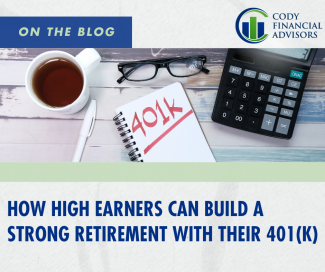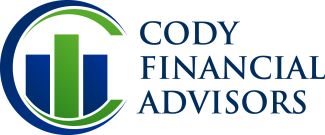
How High Earners Can Build a Strong Retirement with Their 401(k)
Approximately 60 million workers contribute to a 401(k)-retirement plan. A 401(k) is a tax-advantaged retirement savings plan companies offer employees and is funded through elective salary deferrals. There are several benefits to having a 401(k), especially if you are a high earner, that offer ways to build a substantial retirement. However, there are some downsides to keep in mind. Here are both the pros and cons to consider:
Pros to building a robust 401(k):
Contributions can grow tax-deferred, so max out your account
The contributions you make to a 401(k), any earnings in the account from dividends and capital gains to interest are tax deferred. Tax deferred means you don’t owe income tax on the money until it is withdrawn (generally in retirement except for special circumstances). In 2024, the contribution ceiling is $23,000; if you are age 50 or older, you can contribute an additional $7,500 in catch-up contributions for a total of $30,500. As a high earner, you may be able to afford to max out your contribution.
Your 401(k) money may compound over time.
Maxing out your 401(k) means having more money sitting in the invested account. Employees who participate in a 401(k) may see their interest compound over time, potentially equating to exponential growth. Albert Einstein once said, “Compounding is the eighth wonder of the world.” There is no guarantee that it will happen; however, the possibility exists if you participate in a 401(k).
High earners with a 401(k) may be able to do a mega-backdoor rollover.
Because of contribution restrictions, high earners are forced to pursue alternative strategies when it comes to saving as much as they would like toward retirement. If you earn too much to contribute to a Roth IRA, a mega-back door may be your solution, if your 401(k) plan at work permits it. This technique may allow you to save an extra $46,000 into a Roth IRA or Roth 401(k), which you then roll into a mega backdoor Roth.
Employees can get “free” money if they participate in the company’s employee matching program.
A 401(k) match is when your employer puts money into your retirement account determined by what you, the employee, contribute. Generally, an employer will contribute $1 for every $1 the employee contributes up to a percentage of their salary. In some cases, the employer will also offer cents on the dollar, for example, 50 cents on the dollar, for the next 2 % of your salary.
Cons to a 401(k):
Stay on top of your required minimum distributions (RMD)
Your RMD is calculated for each retirement account by dividing the prior December 31 balance of that retirement plan account or IRA by a life expectancy factor that the IRS lists in its tables in Publication 590-B. If you reach age 72 in 2023, your first RMD for 2024 (the year you reach 73) is due by April 1, 2025.
There are contribution limits for eligible participants
In 2024, employees can contribute up to $23,000 or $30,500 if they are 50 and older because of the $7,500 catch-up contribution.
Highly compensated employees (HCE) are limited in how much they can contribute
A highly compensated employee may have a restriction on how much they can contribute to their 401(k) if their compensation reaches $345,000, which is the ceiling for a 401(k)-employer match. In 2024, you can be classified as a HCE if you are:
- An officer earning over $225,000
- An owner holding more than 5% interest in the company
- An owner earning over $155,000, not adjusted for inflation, and holding more than 1% interest in the company
There is the possibility of tax liabilities during account conversions
When considering a mega Roth conversion, you are encouraged to seek the guidance of a financial professional, as the tax bill could be quite large if not done correctly.
Consult your financial professional
Managing your retirement accounts is complex, and making sound decisions is critical to mitigating risk and working to ensure your retirement strategy aligns with your financial goals. Consider consulting a financial professional to review your current strategy.
Important Disclosures:
This material was created for educational and informational purposes only and is not intended as ERISA, tax, legal or investment advice. If you are seeking investment advice specific to your needs, such advice services must be obtained on your own separate from this educational material.
Traditional IRA account owners should consider the tax ramifications, age and income restrictions in regards to executing a conversion from a Traditional IRA to a Roth IRA. The converted amount is generally subject to income taxation.
All information is believed to be from reliable sources; however, LPL Financial makes no representation as to its completeness or accuracy.
Sources:
The Beginner’s Guide to 401(k)s | FINRA.org
Retirement Plan and IRA Required Minimum Distributions FAQs | Internal Revenue Service (irs.gov)
How the Superrich Use 401(k)s (investopedia.com)
How does a 401(k) match work? | Average 401(k) match | Fidelity
The average 401(k) balance by age | Empower
This article was prepared by LPL Marketing Solutions
LPL Tracking # 530028

